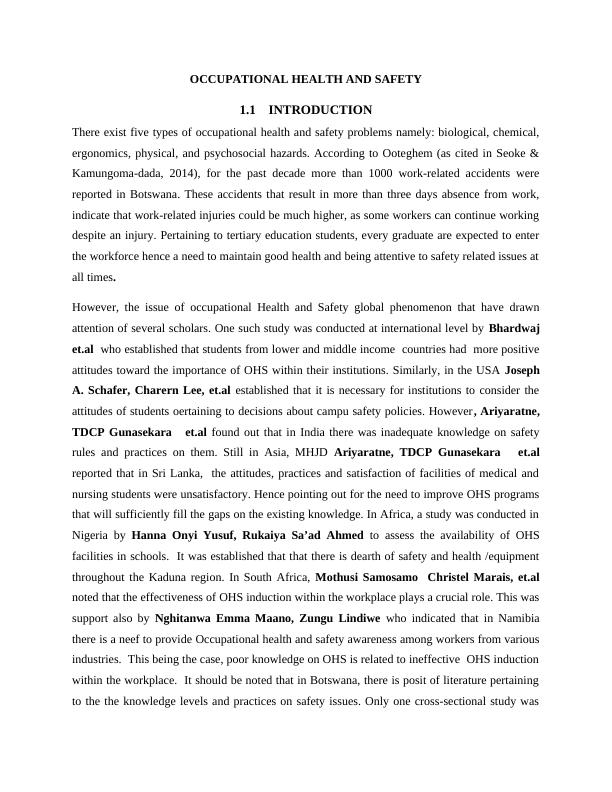Promoting Occupational Health and Safety
Added on 2023-05-08
About This Document
In this report we will discuss about occupational health and below are the summaries point:-
-
There are five types of occupational health and safety problems: biological, chemical, ergonomics, physical, and psychosocial hazards.
-
Work-related accidents are a significant issue in Botswana, with more than 1000 reported in the past decade, indicating that the actual number could be higher.
-
It is essential for tertiary education students to be attentive to safety-related issues as they will eventually enter the workforce.
-
Poor knowledge on OHS is related to ineffective OHS induction within the workplace.
-
Several factors contribute to occupational injuries and accidents, including leadership, illiteracy, stress, lack of training, long working hours, poor working conditions, violence, substance abuse, and non-communicable diseases.
-
Safety is crucial in every organization as it bestows a sense of confidence and caring for employees.
-
Academic institutions have ethical responsibilities to care for their students' safety and instill awareness about safety.
-
A strong safety culture is required in the workplace and academic institutions to protect employees and students.
-
The research aims to stress the need to instill knowledge and accurate practices pertaining to safety issues among higher learning institute students to reduce workplace causalities in Southern Africa.
Promoting Occupational Health and Safety
Added on 2023-05-08
End of preview
Want to access all the pages? Upload your documents or become a member.


